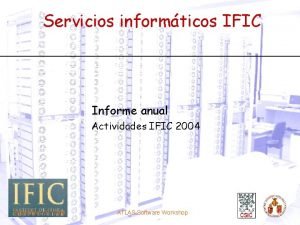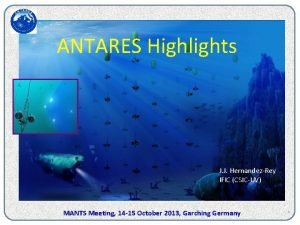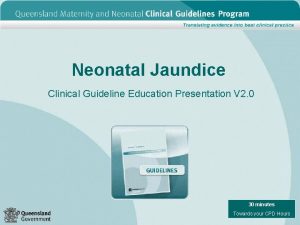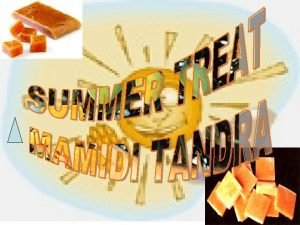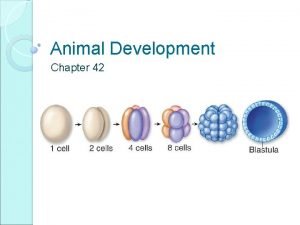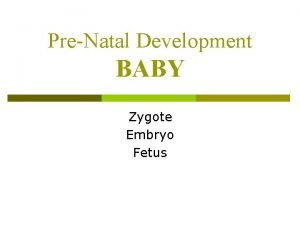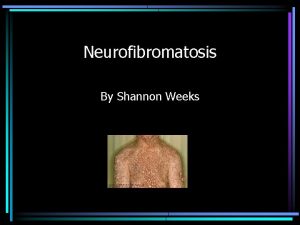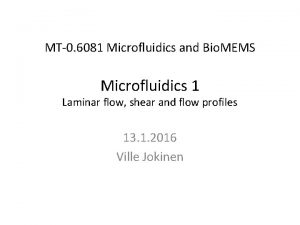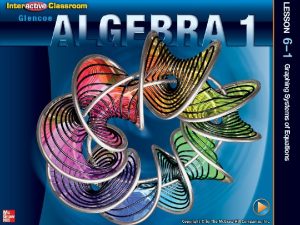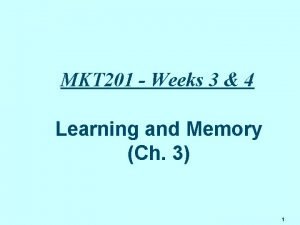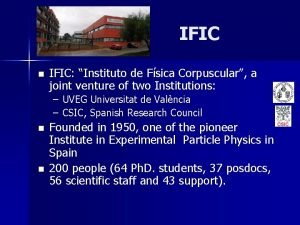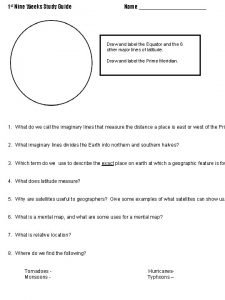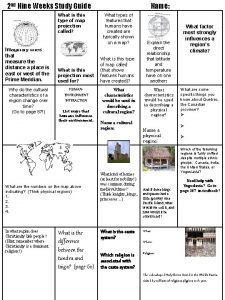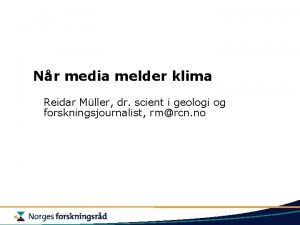1 st Nine Weeks Study Guide ific Scient
































- Slides: 32

1 st Nine Weeks Study Guide ific Scient d Metho Cells Micr oorg anis ms

1. DEFINE QUANTITATIVE OBSERVATIONS. Something that can be counted using numbers. Example: There are 33 students in my class.

2. DEFINE QUALITATIVE OBSERVATIONS. Uses the five senses. (sight, smell, taste, feel, sound) Example: The concrete mix turns hard when water is added to it.

3. WHICH PART OF THE SCIENTIFIC METHOD IS THE “IF-THEN” STATEMENT? The hypothesis is written in an “if-then” statement.

4. WHEN ANALYZING DATA, THE INFORMATION IS GENERALLY PLACED IN A a chart or graph.

5. WHAT ARE SOME OF THE WAYS YOU CAN COMMUNICATE THE RESULTS OF YOUR EXPERIMENT? Some ways to communicate your results are in a science fair, science journal, blog, or magazine.

6. DEFINING/STATING THE PROBLEM IS USUALLY IN Step 1 of the scientific method in the form of a question.

7. TISSUES ARE Groups of cells that share a common structure and function within an organism.

8. SMALL COMPARTMENTS THAT HOLD ALL OF THE BIOLOGICAL EQUIPMENT NECESSARY TO KEEP AN ORGANISM ALIVE AND SUCCESSFUL ON EARTH IS A cell.

9. DESCRIBE A MULTICELLULAR ORGANISM. An organism made up of many cells that are dependent on each other to perform essential functions as a group.

10. WHAT PART OF THE CELL CONVERTS LIGHT INTO CHEMICAL ENERGY IN THE FORM OF MOLECULES CALLED PHOTOSYNTHESIS? chloroplast

11. CYTOPLASM IS A FLUID MIXTURE THAT CONTAINS all of the organelles and provides the space for cell functions to occur.

12. WHAT ORGANELLE SEPARATES THE INSIDE OF THE CELL FROM THE OUTSIDE ENVIRONMENT? cell membrane

13. WHAT ORGANELLE PRODUCES MOST OF THE CELLS ENERGY? mitochondria

14. A STRUCTURE IN A CELL THAT PERFORMS A SPECIAL FUNCTION IS CALLED AN organelle.

15. DESCRIBE THE NUCLEOLUS, WHERE IT IS FOUND, AND ITS FUNCTION IN THE CELL. It is a dark spot inside the nucleus. It acts as the storage area for materials that are used by other organelles.

16. WHAT IS THE FUNCTION OF THE VACUOLE? It stores water, food and waste.

17. HOW DOES THE CYTOSKELETON GIVE A CELL ITS STRUCTURE AND SHAPE? It is a series of fibers made from proteins and it provides structure to the cell and gives it its shape.

18. WHAT DO LYSOSOMES CONTAIN THAT HELP THEM BREAK THINGS DOWN? enzymes

19. THE FUNCTION OF RIBOSOMES IN A CELL IS to make proteins and then release them into the ER. Some ribosomes are attached and some float around the cytoplasm.

20. USE COMPLETE SENTENCES TO THOROUGHLY EXPLAIN THE DIFFERENCE BETWEEN A PLANT AND ANIMAL CELL. A plant cell contains a cell wall and chloroplast. An animal cell has neither. A plant cell also contains a central vacuole and animal cell has a vacuole.

21. GIVE 3 EXAMPLES OF PARASITES. leech, lice, mosquitos

22. THESE BELONG TO A GROUP OF ORGANISMS CALLED PROTISTS, WHICH ARE NEITHER PLANTS NOR ANIMALS. protozoa

23. A_____IS A SUBSTANCE THAT IS USUALLY INJECTED INTO A PERSON OR ANIMAL TO PROTECT AGAINST A PARTICULAR DISEASE. vaccine

24. A DISEASE IS A condition of an organ, or system of an organism. A disease may result from various causes such as: infection, genetic defect, or environmental stress.

25. ANY ONE OF A GROUP OF RELATED PLANTS THAT HAVE NO FLOWERS AND THAT LIVE ON DEAD OR DECAYING THINGS IS CALLED fungi.

26. THE COMMON COLD IS A _____ WHICH IS AN EXTREMELY SMALL LIVING THAT CAUSES A DISEASE AND THAT SPREADS FROM ONE PERSON OR ANIMAL TO ANOTHER. VIRUS

27. A MICROORGANISM IS any organism too small to be viewed by the unaided eye.

28. ________ IS A DISEASE THAT SPREAD BY THE BITE OF AN INFECTED ANOPHELES MOSQUITO. SYMPTOMS INCLUDE FEVER, CHILLS, AND NAUSEA. malaria

29. PARASITES ARE A plant or an animal organism that lives in or on another and takes its nourishment from that other organism.

30. E. COLI AND STAPHYLOCOCCUS ARE KNOWN AS bacteria.

OTHER THINGS TO KNOW • Steps in the Scientific Method • Review the article The Littlest Organism
 Ledelse og informatik i byggeriet
Ledelse og informatik i byggeriet Horde ific
Horde ific Brific
Brific Br ific
Br ific Names that rhyme with julie
Names that rhyme with julie Weeks of supply formula
Weeks of supply formula Weeks of supply formula
Weeks of supply formula Antenatal investigations
Antenatal investigations Dr veronica white
Dr veronica white Structures derived from pharyngeal arches
Structures derived from pharyngeal arches 4 weeks prior to christmas
4 weeks prior to christmas đầu ối phồng
đầu ối phồng Infant jaundice chart
Infant jaundice chart Gestational age in weeks
Gestational age in weeks This week's lesson
This week's lesson Note taking 101-part 2
Note taking 101-part 2 Rolling rota
Rolling rota Dear pat i arrived here three weeks ago
Dear pat i arrived here three weeks ago Two weeks have passed since the new moon
Two weeks have passed since the new moon Chittibabu and chinnababu live in
Chittibabu and chinnababu live in 8 weeks embryo
8 weeks embryo Two week notice letter example
Two week notice letter example Fetus at 15 weeks pictures
Fetus at 15 weeks pictures 3 weeks from today
3 weeks from today Shannon weeks
Shannon weeks 3 weeks from today
3 weeks from today Iron core
Iron core How many weeks
How many weeks 3rd 9 weeks exam review chemistry
3rd 9 weeks exam review chemistry 201 weeks
201 weeks Youtube.com
Youtube.com 4 weeks before christmas
4 weeks before christmas World history final exam study guide
World history final exam study guide

